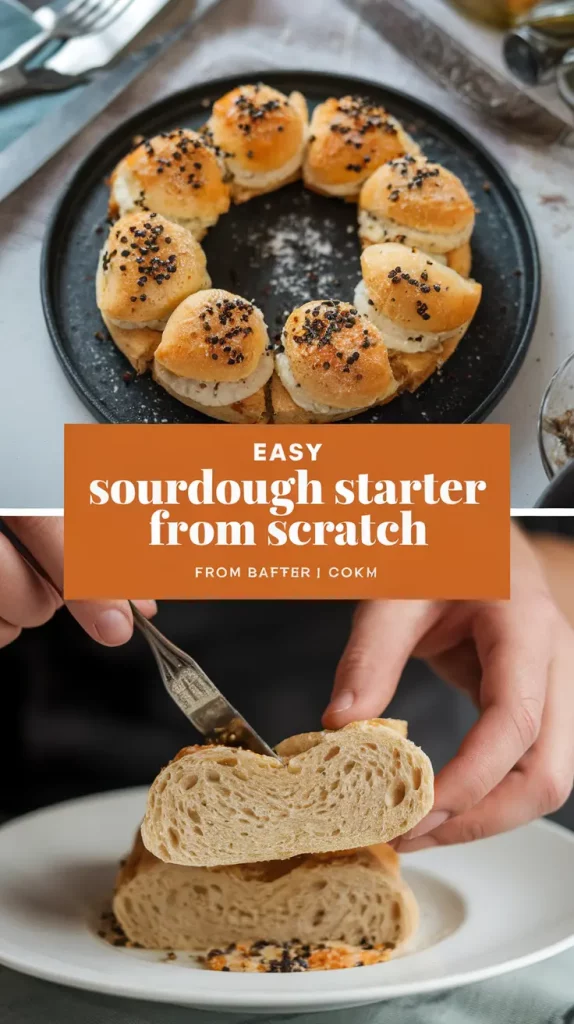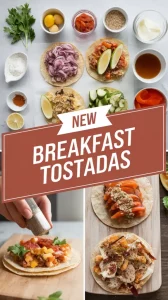Sourdough Starter From Scratch
Making a Sourdough Starter From Scratch is an exciting and rewarding journey into the world of baking. This method has gained immense popularity due to the unique flavor and texture it brings to bread. Additionally, the rise in gluten-free diets has led to an increased interest in options like Gluten Free Sourdough Starter and Gluten Free Sourdough Bread, also known as Pan Sin Gluten. By creating your own sourdough starter, you can enjoy healthier, homemade bread with delightful tastes, all made from simple ingredients. This post will guide you through a straightforward Sourdough Starter Recipe and introduce you to other delicious Gluten Free Recipes Bread, including Cloud Bread and other Homemade Gluten Free options.
What is Sourdough Starter From Scratch?
A sourdough starter is a mixture of flour and water that captures wild yeast and bacteria from the environment. This living culture is essential for the fermentation process in baking, allowing bread to rise and develop complex flavors. Sourdough has a rich history, dating back thousands of years to ancient civilizations, where it was likely discovered by accident. Over time, sourdough has evolved into a beloved method of baking, particularly appealing to home bakers due to its unique taste and health benefits.
With the rise of gluten-free diets, sourdough has adapted to meet the needs of those with dietary restrictions. Gluten Free Sourdough Starter options have emerged, making it possible for anyone to enjoy the delightful flavors of sourdough without gluten. The appeal of sourdough lies not only in its taste but also in its nutritional advantages, making it a preferred choice for many home bakers.

Ingredients and Directions
Ingredients
- Servings: Makes enough for 1 loaf of bread.
- Main Ingredients:
- 1 cup all-purpose flour (or gluten-free flour for gluten-free options)
- 1 cup water (filtered or distilled recommended)
- Optional Add-Ons:
- 1 tablespoon sugar or honey (for initial activation)
- Additional flavorings like spices (e.g., cinnamon or nutmeg) for variations.
Directions
Preparation Time: 10 minutes
Cooking Time: N/A (fermentation process varies)
- In a large glass jar, combine the flour and water, stirring until smooth.
- Cover the jar loosely with a cloth or lid to allow airflow.
- Let the mixture sit at room temperature for 24 hours.
- Feed the starter daily with equal parts flour and water for 5-7 days until bubbly.
Tip: If your starter doesnt bubble, ensure it is kept at a warm temperature and is being fed regularly. This will help stimulate the yeast activity and fermentation process.

Key Takeaways
- Sourdough starter can be made easily at home with just flour and water.
- Gluten-free options are available for those with dietary restrictions.
- Regular feeding is essential for a healthy starter.
- Homemade sourdough provides unique flavor and nutritional benefits.
- A thriving sourdough starter can lead to delicious gluten-free breads and other baked goods.

Recipe Variations
- Gluten Free Sourdough Starter: Use gluten-free flour like brown rice or almond flour to create your starter.
- Cloud Bread: A low-carb option using egg whites and cream cheese, perfect for those watching their carb intake.
- Homemade Gluten Free Bread: Explore various recipes that utilize your starter for different types of gluten-free breads.

FAQs
- What is a sourdough starter? A mixture of flour and water that captures wild yeast and bacteria for fermentation.
- Can I make a gluten-free sourdough starter? Yes, by using gluten-free flours like brown rice flour or almond flour.
- How long does it take to create a sourdough starter? Typically, it takes about 5-7 days to develop a bubbly and active starter.
- What should I do if my starter isn’t bubbling? Ensure it’s kept at a warm temperature and is being fed regularly.
- How can I use my sourdough starter? It can be used in various recipes, including sourdough bread, pancakes, and even waffles.
Making a Sourdough Starter From Scratch offers a multitude of benefits, including enhanced flavor, health advantages, and remarkable versatility in baking. I encourage you to embark on this rewarding journey and explore gluten-free options for your baking adventures. Share your experiences or ask any questions in the comments below!











